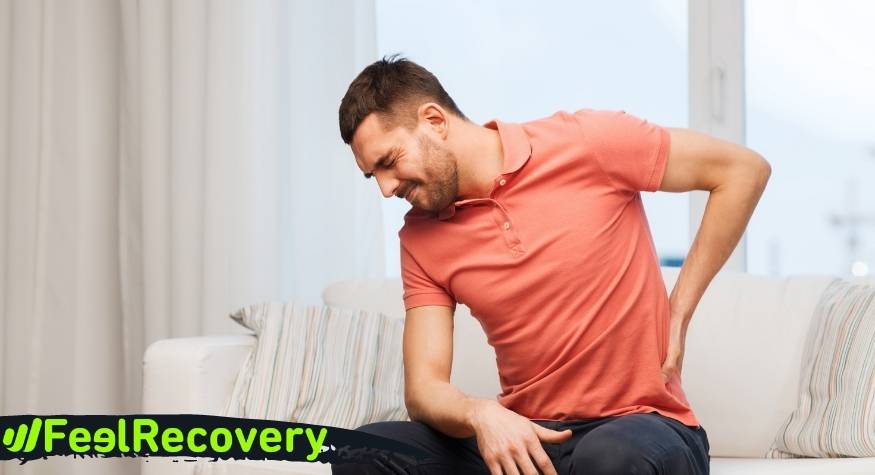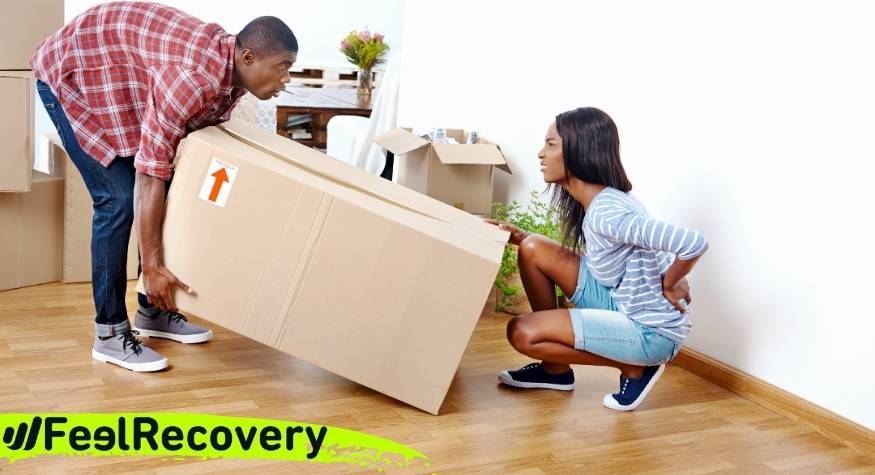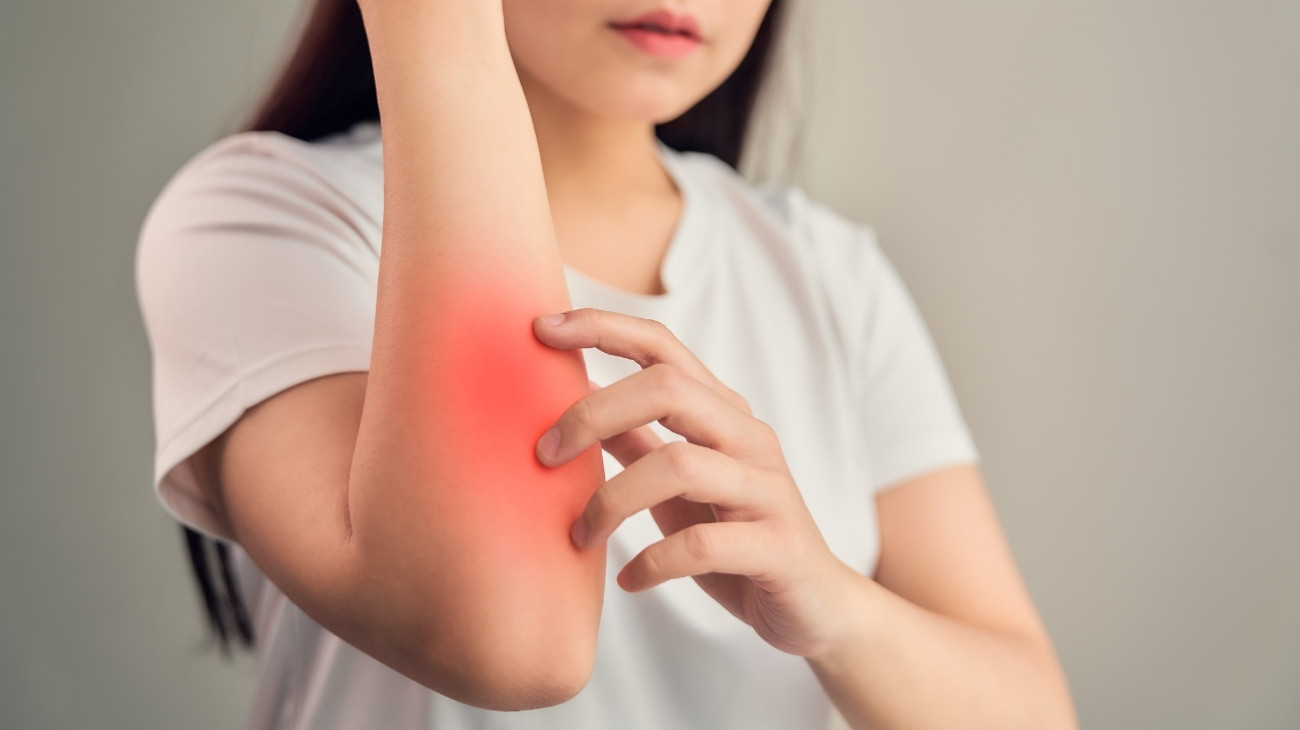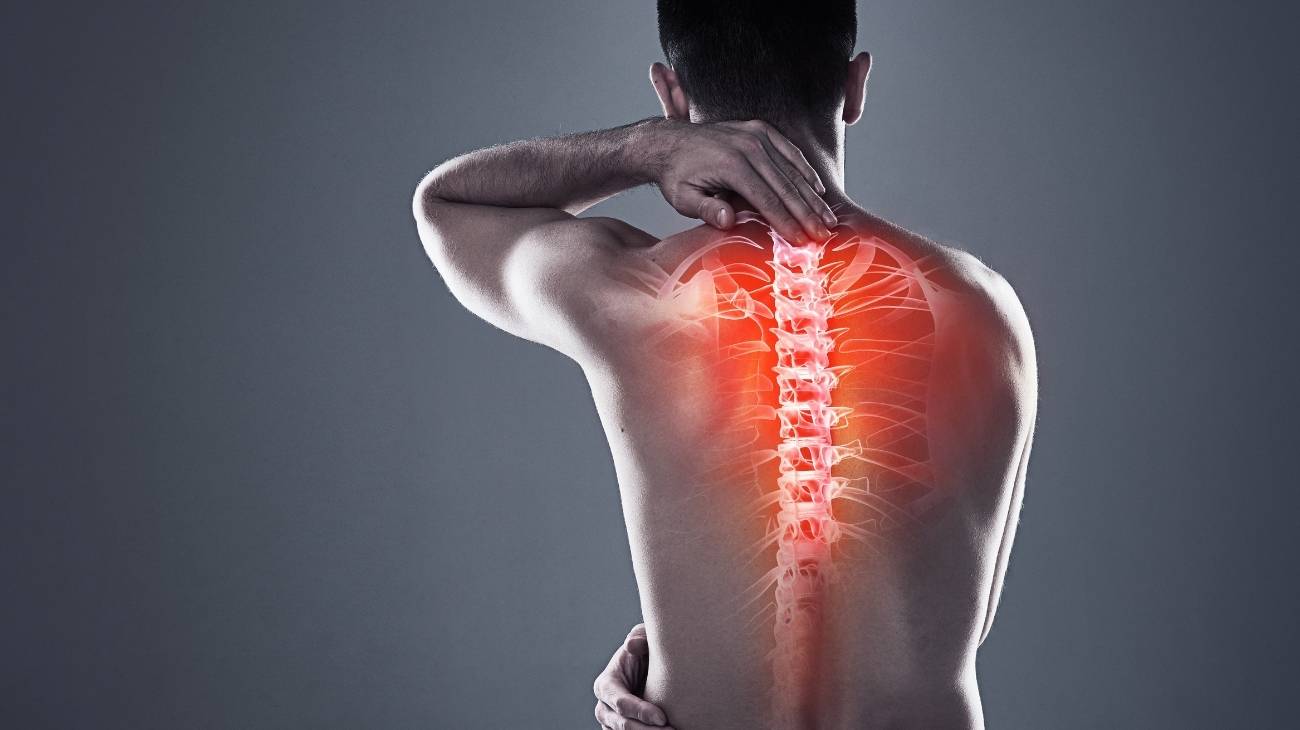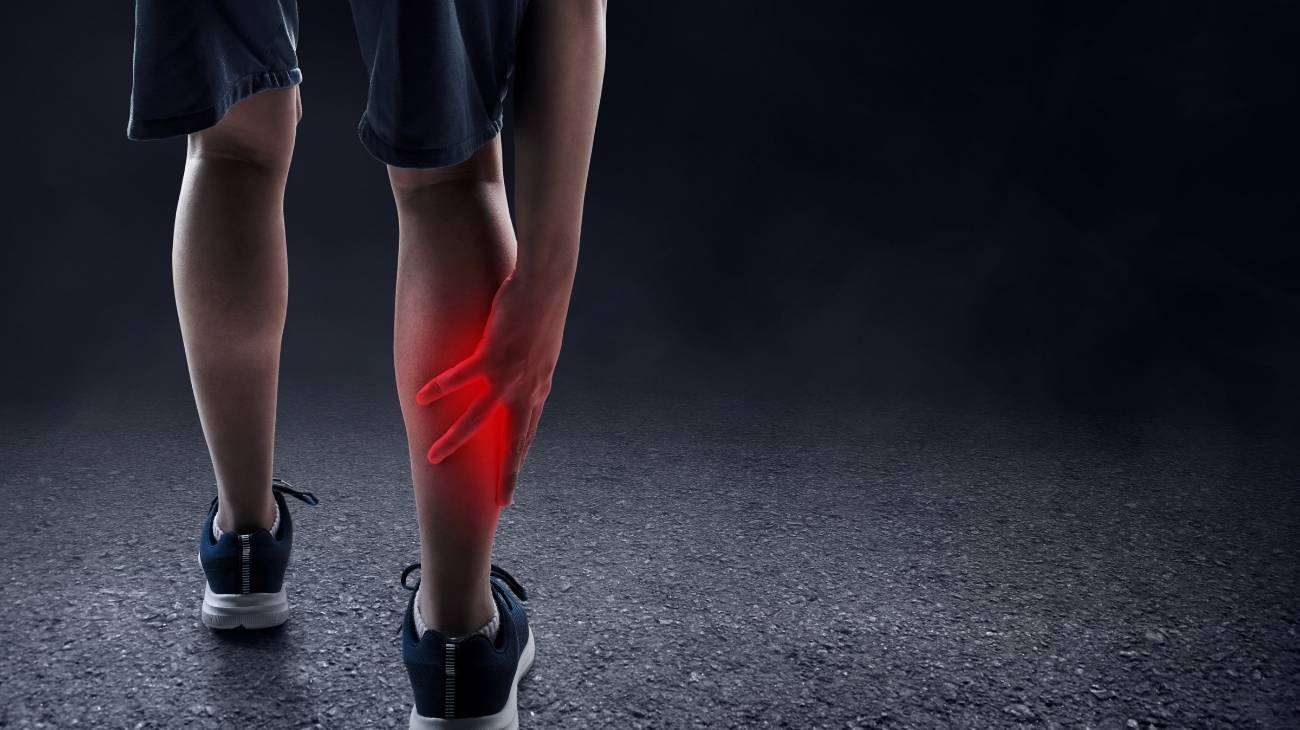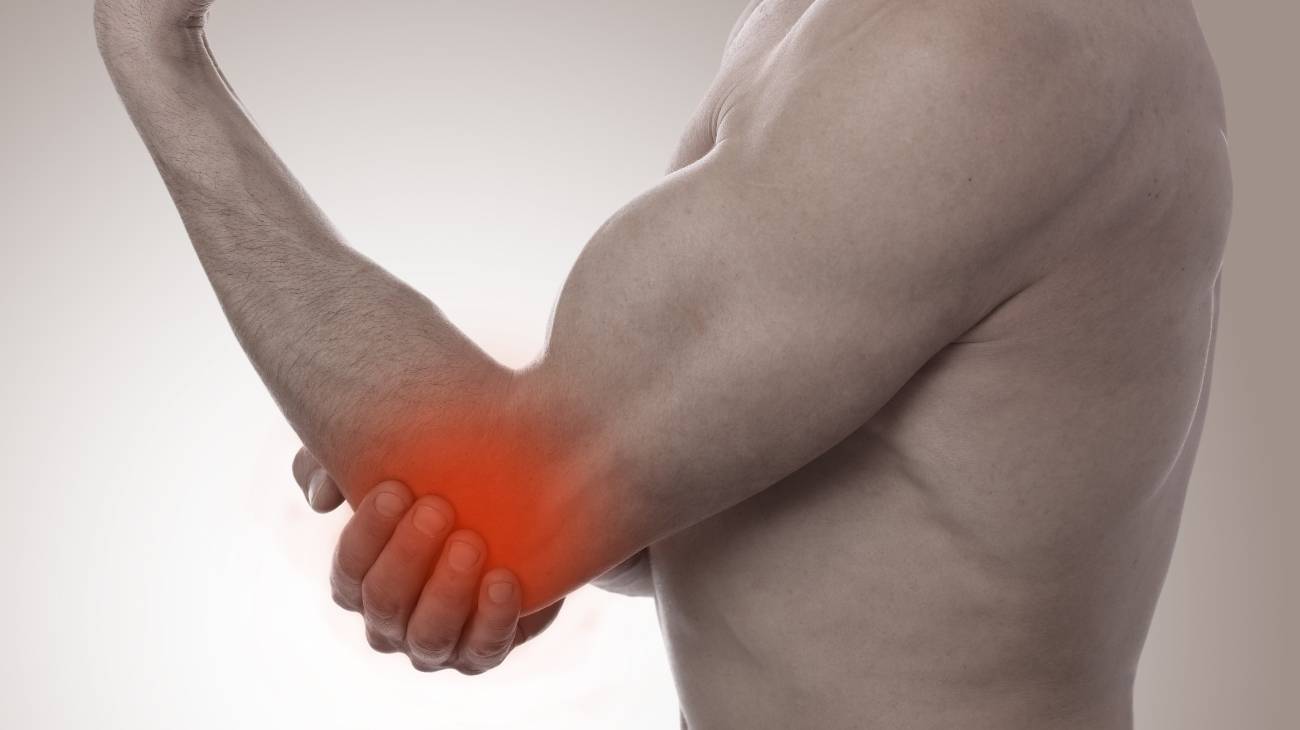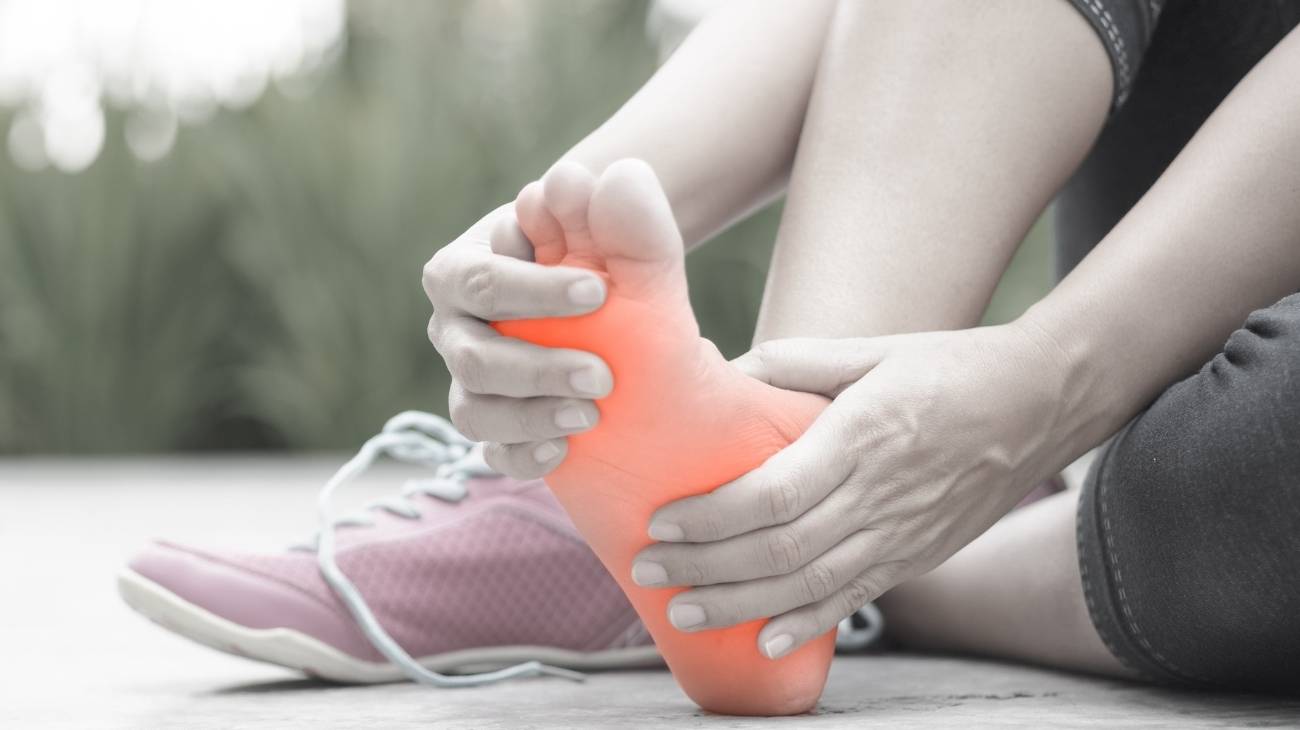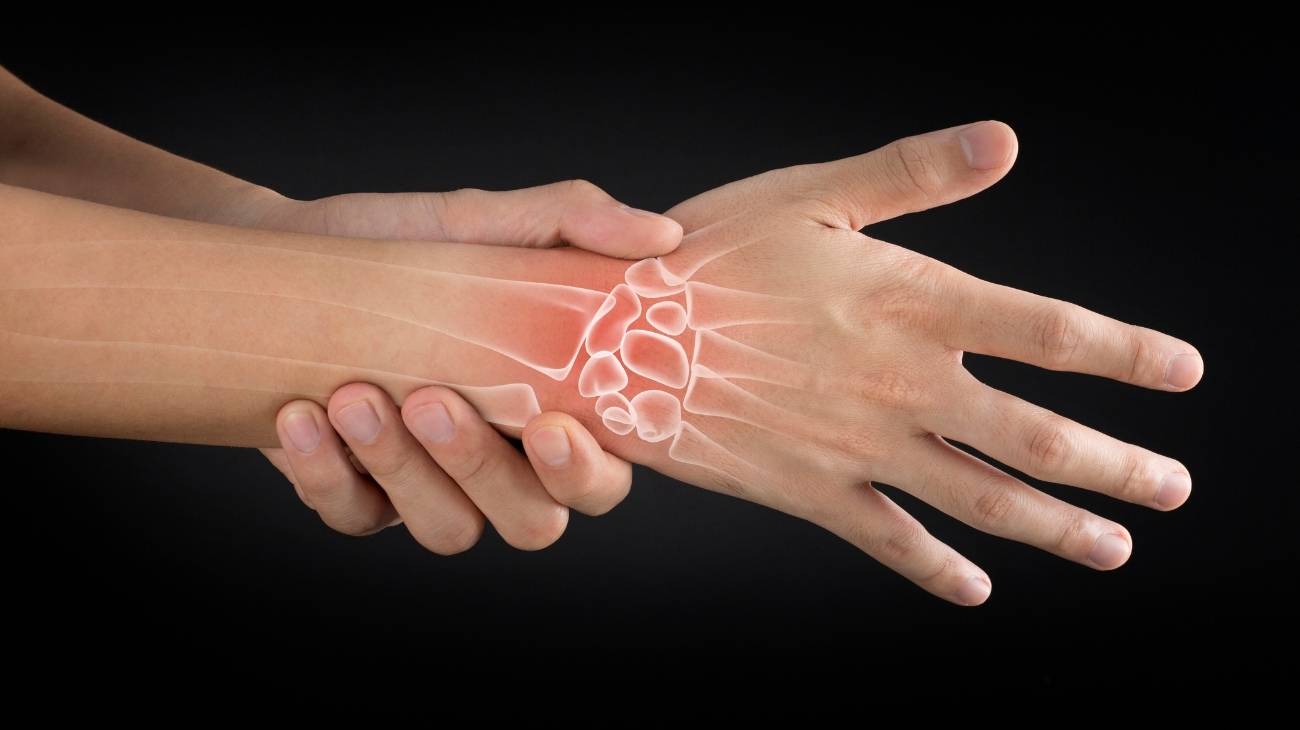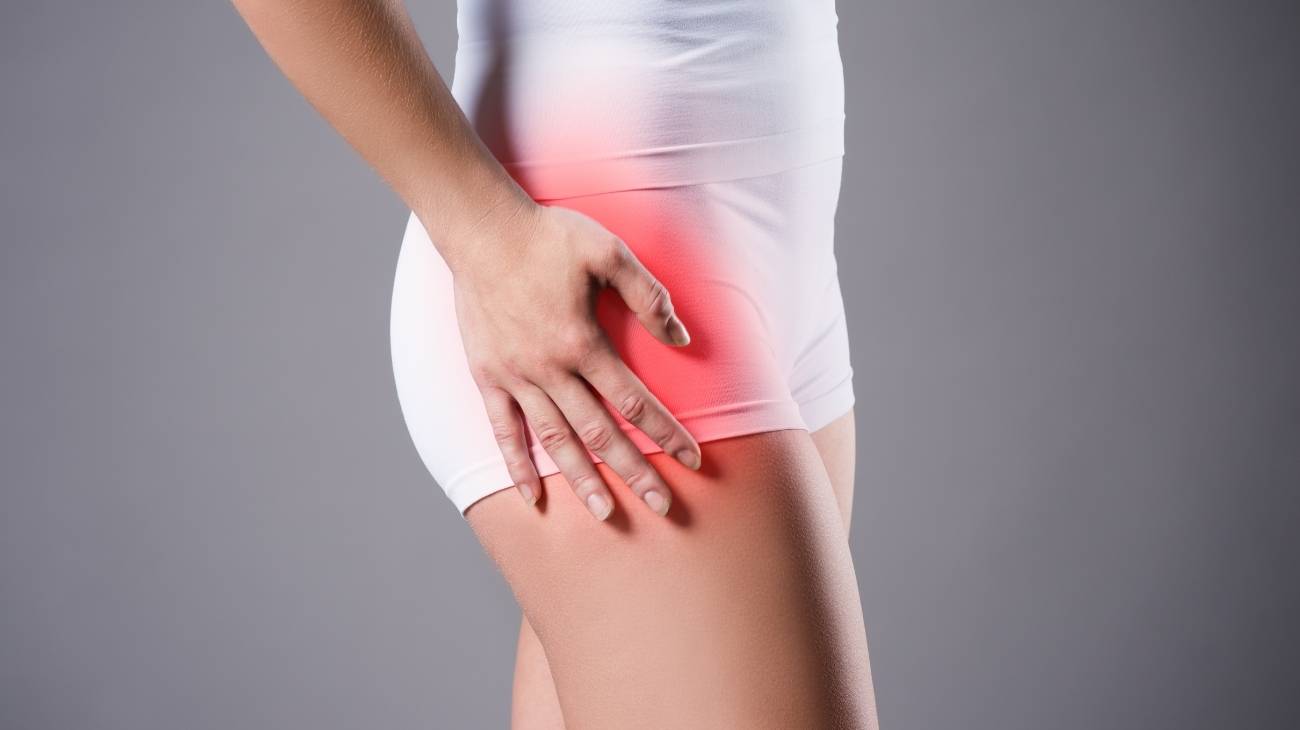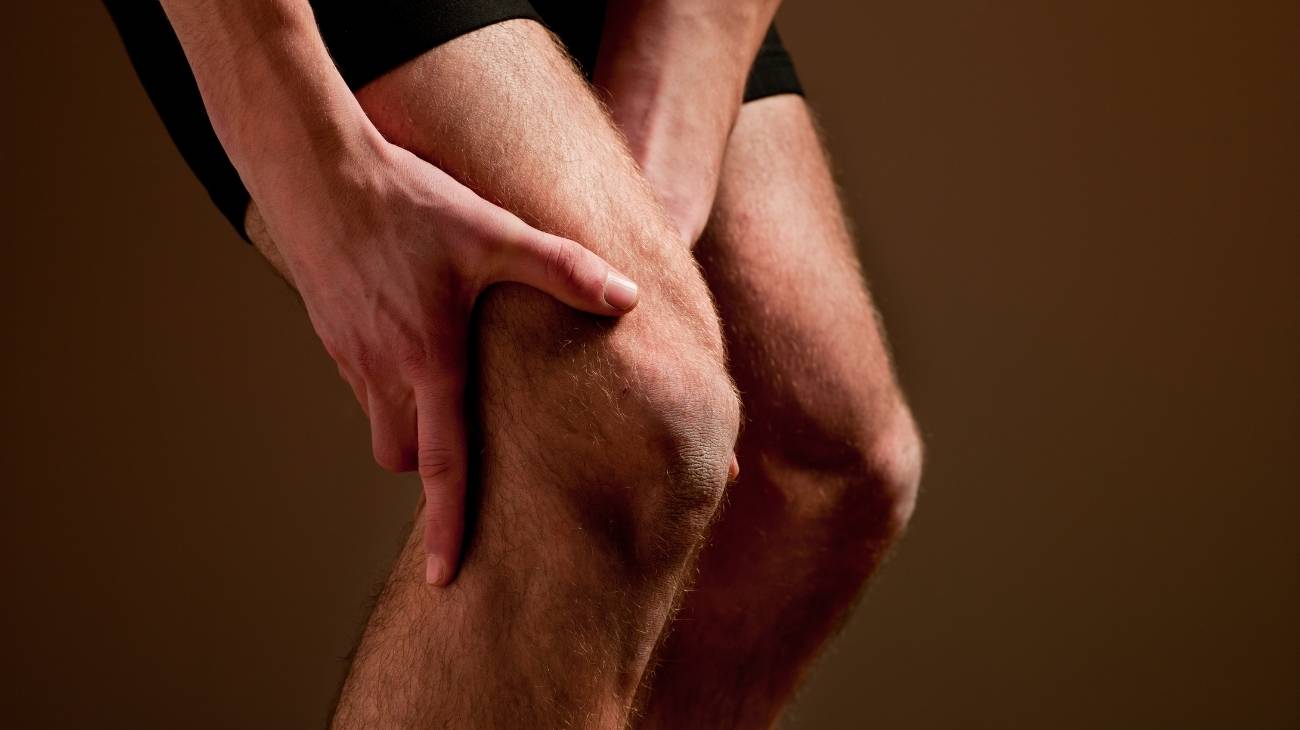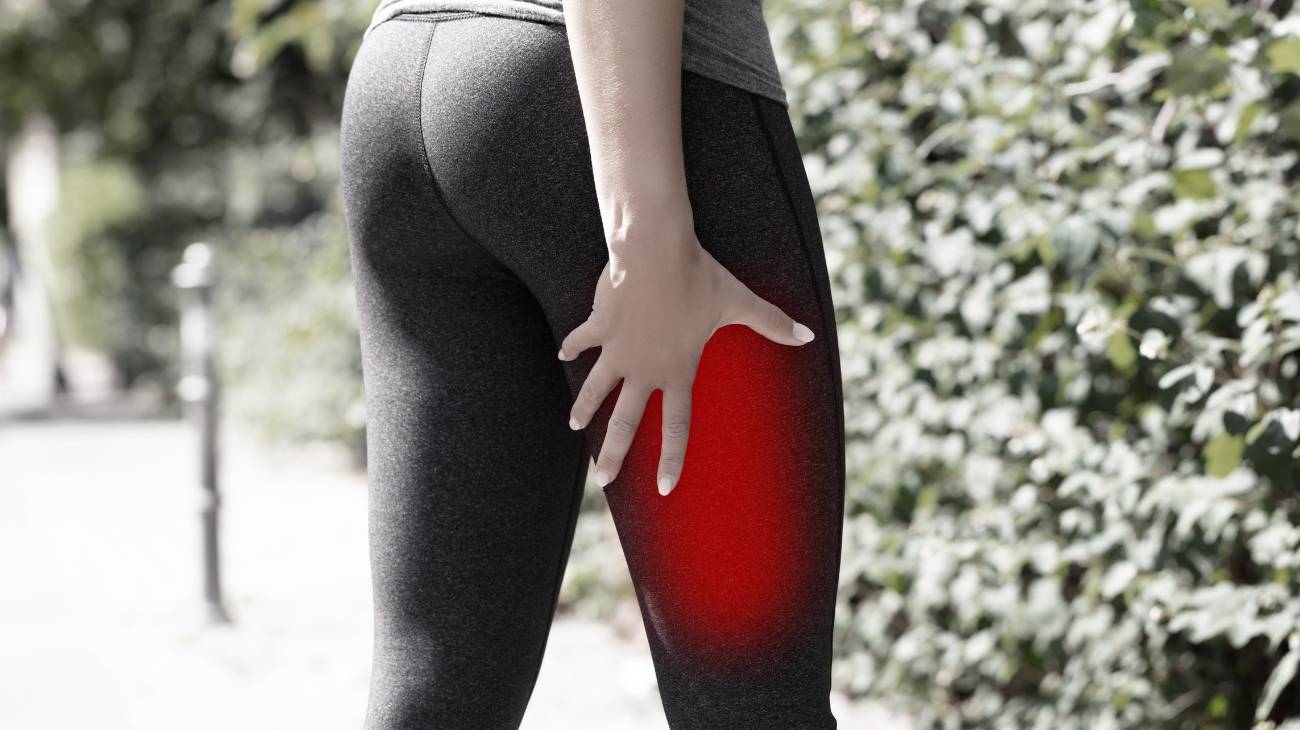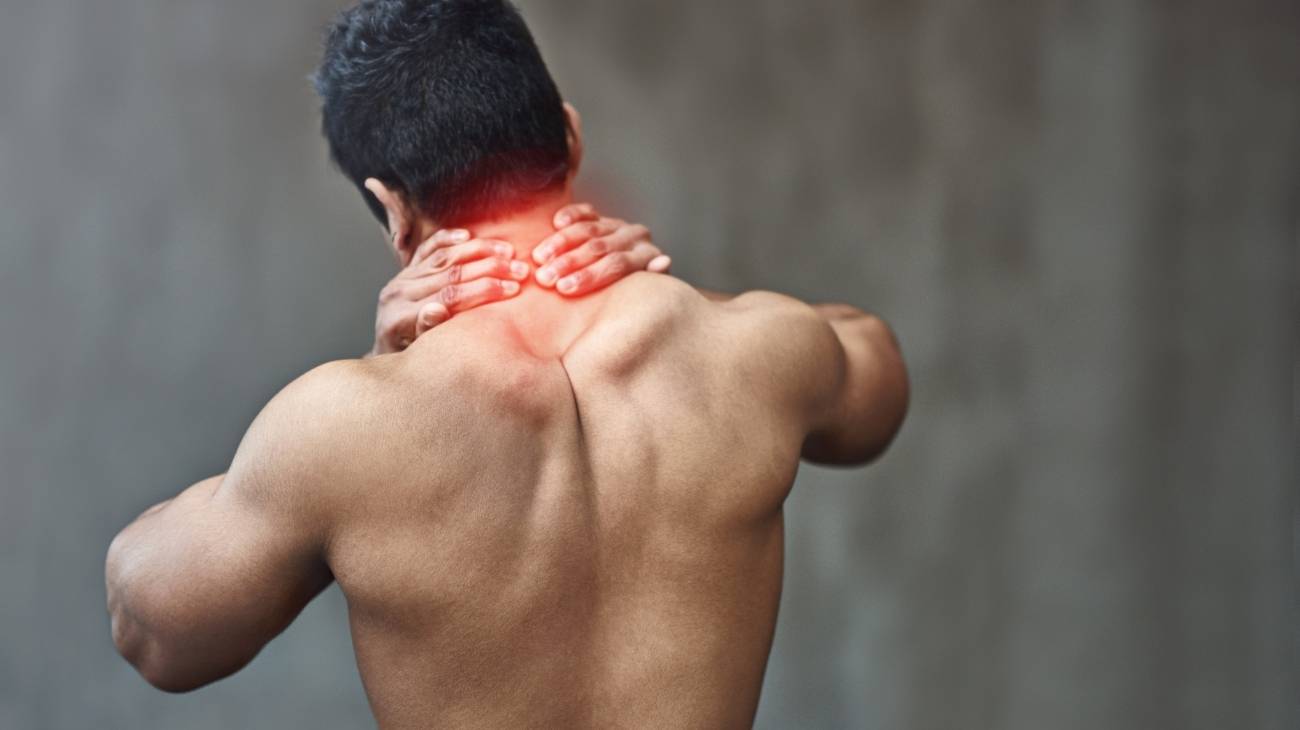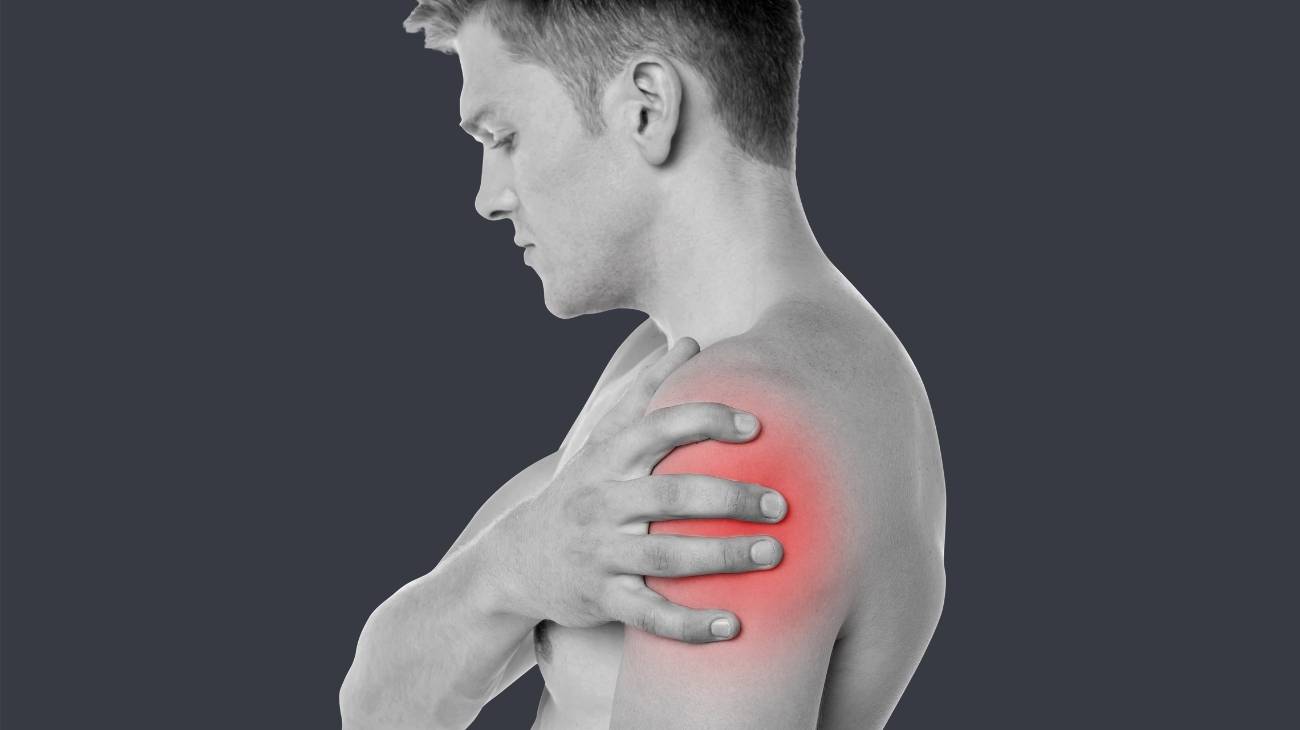On average, 80% of the world's population will have back pain at some time in their lives. It is a more common scenario than you might think and the symptoms are usually transient unless they are ignored and simple ailments become chronic injuries.
As the prevalence of back injuries falls on the older adult population, they are the ones who need to be most careful. Learn about the most common back ailments and injuries, as well as the possible causes that trigger them. Do you know how to use the PRICE therapy? We will tell you what it is and what it is for.
What types of back injuries can we suffer?
Muscle weakening, poor postural hygiene, obesity and infections are scenarios that generate some of the most common back injuries. Depending on your age, the ailment may be due to osteoporosis or kidney stones, read on to find out more...
Learn more about some types of back injuries, especially in the lower back:
Lower back pain
If you usually do activities at home or at work that require bending and twisting in your back, it is likely that at some point you will suffer from this pathology. Low back pain consists of localised pain from the L1 to L5 section of the lumbar area and can be present in young people as well as in people over 60 years of age.
It is a muscular pain caused by sudden and intense movements, if added to this, our muscles are not used to this intensity, they can become sore after the activity.
Strains
Intense sporting activity, poor nutrition or a sedentary lifestyle are common causes of muscle contractures. This ailment is based on the irregular and involuntary grouping of the fibres that make up the muscles of the back and is often accompanied by localised pain.
As the muscles are not prepared for the physical activity required, they fatigue more quickly and muscle function is impaired. When there is a contracture, you will feel a bulge in the painful area, tightness, in some cases redness, but with a good rest and application of cold in the first 24-72 hours after the injury, it is usually necessary for the fibres to relax and ungroup.
Scoliosis
Scoliosis is a pathology that involves the lateral and irregular curvature of the spine. It can be diagnosed from a very early age and as children grow older, it is advisable to carry out monitoring to find out how the curvature is progressing and to choose the best method to try to stop it.
Most cases are mild, but there are scoliosis that generate a pressure in the chest that alters the functioning of the lungs. The pathology is also associated with cerebral palsy and muscular dystrophy, so it should be treated from the first moment it is detected.
Hernias
The pathology is more frequent in middle-aged and elderly people. It consists of the displacement of the discs that separate each vertebra and that allow movements such as bending and moving sideways. When a herniated disc occurs, there may be pressure on the nerves of the spine to the point of generating a radiculopathy that affects the roots of these nerves.
Although the spine has seven cervical and 12 thoracic vertebrae, herniated discs usually affect mainly the five vertebrae in the lumbar region.
Arthrosis
This is the wear and tear of the cartilage located in the discs of the spine and affects the mobility of people when walking or trying to move the trunk to either side. It is a pathology resulting from a hereditary predisposition, an excess of steroid hormones and as a consequence of excessive sporting activity and advanced age.
It is most common in the cervical and lumbar discs. When osteoarthritis is diagnosed, it is because the intervertebral discs have lost their ability to cushion and return to their normal state.
Sciatica
Compression of the sciatic nerve causes severe pain in the lower back and extends to the legs in the most severe cases. This compression is usually caused by a herniated disc, bone spurs and constant compression of the spine due to physical strain.
It is also possible that pathologies in the intestine and muscle weakness cause this pain. In most cases, this pathology can be cured by strengthening exercises for the muscles in the middle of the body, correcting the patient's postural hygiene, and it is also advisable to use lumbar supprt when we are going to carry out any high intensity activity that involves the back.
Back pain
This is a discomfort caused by contractures in specific muscles of the back that are connected to the spinal column at the level of the thoracic vertebrae. Injuries to the trapezius muscle, the scapular angle muscle and the rhomboids major are the most common causes of dorsalgia.
As it is a muscular injury, it is sufficient to apply local cold for the first 24-72 hours after suffering the episode of pain, in addition to accompanying this treatment with rest. When the acute phase has subsided, it is advisable to see a doctor for a more specific diagnosis.
Sprains and strains
During intense physical exertion, muscles and tendons can be overstretched and injured. Sprains occur when ligaments are overstretched and are more likely to occur with improper twisting of the back.
If it is the muscles that suffer, then we are talking about strains and they occur with slight or deep tears of the muscle fibres found in the lower back.
Best products for lumbar and back injury recovery
Bestseller
-
Microwave Wheat Bag for Back Pain Relief (Extra Large) (Hearts)
£24,95 -
Microwave Wheat Bag for Back Pain Relief (Extra Large) (Oxford)
£24,95 -
Microwave Wheat Bag for Back Pain Relief (Extra Large) (Sport)
£24,95 -
Microwave Wheat Bag for Neck & Shoulder Pain Relief (Hearts)
£24,95 -
Microwave Wheat Bag for Neck & Shoulder Pain Relief (Oxford)
£24,95 -
Microwave Wheat Bag for Neck & Shoulder Pain Relief (Sport)
£24,95 -
Microwaveable Wheat Bag for Pain Relief (Hearts)
£20,95 -
Microwaveable Wheat Bag for Pain Relief (Oxford)
£20,95 -
Microwaveable Wheat Bag for Pain Relief (Sport)
£20,95 -
Wheat Bag for Microwave Classic Bottle Shaped (Hearts)
£20,95 -
Wheat Bag for Microwave Classic Bottle Shaped (Oxford)
£20,95 -
Wheat Bag for Microwave Classic Bottle Shaped (Sport)
£20,95
-
Back Support Belt (Black)
£39,95 -
Back Support Belt (Green)
£39,95 -
Back Support Belt (Pink)
£39,95 -
Ice Massage Roller Ball (Black)
£34,95 -
Ice Massage Roller Ball (Green)
£34,95 -
Ice Massage Roller Ball (Pink)
£34,95 -
Sacroiliac Support Belt (Black)
£24,95 -
Sacroiliac Support Belt (Green)
£24,95 -
Sacroiliac Support Belt (Pink)
£24,95 -
Soft Density Foam Roller for Recovery (Black)
£34,95 -
Soft Density Foam Roller for Recovery (Green)
£34,95 -
Soft Density Foam Roller for Recovery (Pink)
£34,95
What are the causes of back pain?
There are hundreds of possible triggers of back pain, but we group these causes as consequences of bad habits and actions that you should be aware of from now on.
Poor fitness
Whether due to a sedentary lifestyle, being overweight or pregnancy, these conditions cause the muscles and ligaments in the back to suffer more and lose their flexibility and elasticity. When you try to exert yourself in ways you're not used to, your body doesn't respond as it should and is easily injured.
Skipping frequent exercise weakens muscle tissue and causes bones to accumulate more stress and weight than they can handle. Keep in mind that your body needs physical activity to keep it active.
Muscle overload
Even if you are a sports enthusiast, overtraining will cause your back muscles to become fatigued and unable to respond to training. As a result, long-term contractures and disc slippage are common.
Train consciously, warm up and cool down your body with stretching exercises and you will notice that your muscles will better withstand the demands of your sport. It is also recommended that the intensity of your workouts be progressive in order to avoid injury.
Poor technique
You may have to lift heavy boxes at home or at work. As we have already mentioned, your muscles were probably not prepared for that effort and got injured. The best thing to do is to use your leg strength to lift heavy objects and avoid putting too much strain on your back.
The legs are in a better condition to support a heavier weight, because of their large size and muscular capacity. Remember that knowing the biomechanics of our body and knowing how to use it correctly will greatly reduce all kinds of injuries. You can also use lumbar supports to support your back muscles during the activity you have to do.
Diseases
Internal infections or a kidney stone will also cause you to feel pain in your back. When you have any discomfort that lasts more than four weeks, it is recommended that you visit your doctor for a more intensive examination so that he or she can make a more specific diagnosis.
If he or she cannot find a reason for the discomfort, then an X-ray will give more clues as to what is happening in your back to cause the pain. Osteoporosis is also a cause of pain due to bone weakening, in short, if there has been no external cause to which we can attribute an injury, we should always go to the doctor for proper treatment.
What are the symptoms of lumbar and lower back pain?
Bear in mind that there are several signs to look out for. It all depends on the type of injury and whether it is something new to you or a recurrence of a known injury.
- General discomfort: You may feel your muscles tense, like knots in the fibres and it is difficult to move. It is not a painful sensation per se, but your body feels tense. Avoid sitting, bending or stooping for an hour at a time.
- Localised pain: Whenever you have pain, there is always an injury and it needs to be attended to. When injuries are neglected, they become more complicated and aggravated. In sports it is more important to pay attention to pain, because the muscles and tissues are fatigued until the tension affects the nerves and recovery becomes slower.
- Difficulty moving: If you feel that even walking is difficult, then this is a sign that something is wrong, and the problem is likely to be muscular. The best thing to do is to take a break and wait for the discomfort to go away.
- Inflammation and tension: When muscles and ligaments are irritated there is an immediate inflammation that must be calmed instantly and for that you can apply the PRICE therapy that you will learn later.
- Stiffness: Your whole back is likely to feel very stiff, which will make it difficult for you to turn your whole trunk from side to side freely.
- Fever: If the source of your back pain is a herniated disc or osteoarthritis, you are likely to develop a fever during some episodes of pain.
- Dizziness and vomiting: If the pain is very intense, it will probably radiate towards some nerves in the spine, which may cause dizziness and even vomiting.
- Pain in the buttocks: A herniated disc can be felt in other parts of the body, as can sciatica, with the buttocks and upper legs being the areas where the pain most often radiates.
How to apply the RICE therapy to treat back injuries?
This therapy is most commonly used in the sporting world, but at home or at work you can also use it for minor pain. The new update includes an extra step, the protection step, and gives the PRICE therapy its name.
- Protection: Cover your back with a bandage, although a lumbar support with light pressure also works. You should minimise movement in your lower back at the time of injury.
- Rest: Your doctor should indicate how long you should rest, but if it is a minor injury it should be no more than 72 hours. It is important that you respect this rest and return to your daily activities progressively.
- Ice: Applying cold will help to reduce pain and inflammation. Try not to use it for more than 20 minutes and do not put ice directly on the skin, you can do it 3-4 times a day.
- Compression: Ask your doctor if it is advisable to use an elastic bandage or lumbar support during rest. Depending on the type of injury, it is advisable or not to use a compressive garment.
- Elevation: In the first few days you will certainly have to lie down and tilt your head slightly. This will lower the blood supply and help against pain and swelling.
Most common back and lumbar sports injuries
If you do any strength or endurance sport, there are likely to be a number of possible back injuries. Good training will help prevent them. Also, knowing which types of sports injuries to the back are the most common and how to prevent them will be of great help to you.
Why is it important to clean TENS/EMS electrode pads?How to clean the electrodes pads of TENS/EMS electrostimulator?When to replace electrostimulator padsIs it safe to use old electrode pads?Tips for maintaining...
What is vibration therapy and what types of ailments can be treated with vibration balls?What is myofascial release therapy and what kind of ailments can be treated with massage balls?What...
How can myofascial release therapy improve my health according to science?What should I consider when choosing the best electric massage roller?How to use an electric vibrating massage roller?F.A.Q: Frequently Asked...
How does the head of my muscle massage gun influence the experience of use?What types of heads do massage guns have and what is each one used for?What are the...
What is myofascial release therapy and how does vibration influence it?What to consider before performing myofascial release massages with Foam Foller with vibration?Vibration Foam Roller Exercises for the upper bodyVibration...
What kind of pains and injuries can be treated with vibrating massage rollers?How to use vibrating massage rollers to relieve aches and pains and speed up recovery from injuries?What kind...
What is an vibrating Foam Roller and what kind of injuries can be treated with one?What are the differences between an vibrating foam roller and a normal massage roller?What are...
What kind of ailments can be treated with a vibrating massage ball?On which areas of the body can we use a vibrating massage ball?How to use the vibrating massage balls?What...
How can massage therapy help improve your health according to science?What are the main benefits of using electric vibrating massage balls?What should we consider when choosing the best vibrating massage...
How can massage therapy improve my health according to science?What are the most important benefits of using an electric neck, back and shoulder massager?What are the most important features when...
Most common back conditions
Every injury starts with signs that are sometimes clear, such as severe pain, and sometimes nothing more than discomfort and a feeling of muscle tension. Check for possible back problems such as osteoarthritis, dislocations, strains, sciatica, herniated discs or lower back pain.
Why is it important to clean TENS/EMS electrode pads?How to clean the electrodes pads of TENS/EMS electrostimulator?When to replace electrostimulator padsIs it safe to use old electrode pads?Tips for maintaining...
What is vibration therapy and what types of ailments can be treated with vibration balls?What is myofascial release therapy and what kind of ailments can be treated with massage balls?What...
How can myofascial release therapy improve my health according to science?What should I consider when choosing the best electric massage roller?How to use an electric vibrating massage roller?F.A.Q: Frequently Asked...
How does the head of my muscle massage gun influence the experience of use?What types of heads do massage guns have and what is each one used for?What are the...
What is myofascial release therapy and how does vibration influence it?What to consider before performing myofascial release massages with Foam Foller with vibration?Vibration Foam Roller Exercises for the upper bodyVibration...
What kind of pains and injuries can be treated with vibrating massage rollers?How to use vibrating massage rollers to relieve aches and pains and speed up recovery from injuries?What kind...
What is an vibrating Foam Roller and what kind of injuries can be treated with one?What are the differences between an vibrating foam roller and a normal massage roller?What are...
What kind of ailments can be treated with a vibrating massage ball?On which areas of the body can we use a vibrating massage ball?How to use the vibrating massage balls?What...
How can massage therapy help improve your health according to science?What are the main benefits of using electric vibrating massage balls?What should we consider when choosing the best vibrating massage...
How can massage therapy improve my health according to science?What are the most important benefits of using an electric neck, back and shoulder massager?What are the most important features when...
References
- Ehrlich, G. E. (2003). Back pain. The Journal of Rheumatology Supplement, 67, 26-31. https://www.jrheum.org/content/67/26.abstract
- Burton, A. K. (2005). How to prevent low back pain. Best practice & research Clinical rheumatology, 19(4), 541-555. https://www.sciencedirect.com/science/article/abs/pii/S1521694205000240
- Hoy, D., Brooks, P., Blyth, F., & Buchbinder, R. (2010). The epidemiology of low back pain. Best practice & research Clinical rheumatology, 24(6), 769-781. https://www.sciencedirect.com/science/article/abs/pii/S1521694210000884
- Andersson, G. B. (1998). Epidemiology of low back pain. Acta Orthopaedica Scandinavica, 69(sup281), 28-31. https://www.tandfonline.com/doi/pdf/10.1080/17453674.1998.11744790
- Waddell, G. (2004). The back pain revolution. Elsevier Health Sciences. https://books.google.es/books?hl=en&lr=&id=MsM5EAAAQBAJ
- NACHEMSON, A. L. (1985). Advances in low-back pain. Clinical Orthopaedics and Related Research (1976-2007), 200, 266-278. https://journals.lww.com/corr/Abstract/1985/11000/Advances_in_Low_Back_Pain.31.aspx
- Cohen, S. P., Argoff, C. E., & Carragee, E. J. (2008). Management of low back pain. Bmj, 337. https://www.bmj.com/content/337/bmj.a2718.full.pdf+html
- Adams, M. A. (2004). Biomechanics of back pain. Acupuncture in medicine, 22(4), 178-188. https://journals.sagepub.com/doi/abs/10.1136/aim.22.4.178?journalCode=aima
- Frymoyer, J. W., POPE, M. H., COSTANZA, M. C., Rosen, J. C., GOGGIN, J. E., & WILDER, D. G. (1980). Epidemiologic studies of low-back pain. Spine, 5(5), 419-423. https://journals.lww.com/spinejournal/Abstract/1980/09000/Epidemiologic_Studies_of_Low_Back_Pain.5.aspx
- Maher, C., Underwood, M., & Buchbinder, R. (2017). Non-specific low back pain. The Lancet, 389(10070), 736-747. https://www.sciencedirect.com/science/article/abs/pii/S0140673616309709


























































